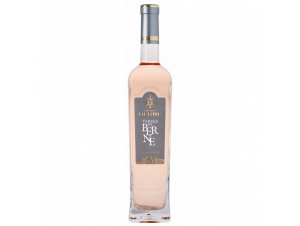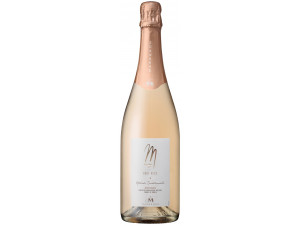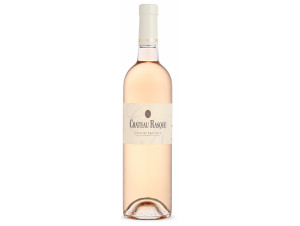You have no items in your shopping cart.
Wine Provence
-
Top Selling-15%
-
Top Selling
-
Top Selling-20%
- -23%
- -11%
- -26%
- -15%
- -15%
Provence is a bucolic wine region
Provence offers us a postcard image. Its wines will bring back to our minds the song of the cicadas, the olive trees, the fields of lavender and that gentle warmth that lulls us into spring. It is this bucolic image that first comes to mind when we talk about Provence. But when it comes to its wine world, we are also highly spoiled. You can admire these beautiful landscapes all along the wine route. This road crosses Provence from Brignoles to Bandol.
The Provence wine region is 200 km long through four departments: the Alpes-de-Haute-Provence, the Alpes-Maritimes, the Bouches-du-Rhône and the Var. With 27,000 hectares of vines in an ideal Mediterranean climate, this region produces white, rosé and red wines to the delight of our taste buds. Its average annual production is 1,160,000 hl. With more than 70% of its production in rosé wines, Provence remains the star region for this type of wine. But its dry and fruity white wines (5% of production) and its supple, robust and aromatic red wines (25% of production), which are less well known, are worth a visit.
With a huge number of varietals, Provence offers us 9 A.O.C. appellations d'origines contrôlées, four of which are sub-regional and five communal, which you can discover in detail further down in this article.
A brief history of the wines of Provence
The culture of the vine in Provence dates back to antiquity. This is known from archaeological excavations that found fossilized grapes in ancient Greek amphorae in Marseille. The arrival of the Romans on the Gallic coast will then develop the production of wines.
In the Middle Ages, the vineyards were mostly under the aegis of local monasteries. The wine of the time was recognised and highly valued. It was a quality wine reserved for a certain elite. The importance of the Count of Provence, René d'Anjou, who, in the 15th century, was the true architect of the wine region we admire today, is worth noting. Like all regions of France, Provence was affected by the Phylloxera crisis of 1880, which destroyed a large number of vines. As a reminder, this was the invasion of a devastating insect. The 20th century will mark the great return of the vineyards of Provence on the national and world scene thanks to the acquisition of the first A.O.C. and the development of green tourism.
Characteristics of the vineyards of Provence
The climate of the Provence region is obviously recognised by summer holidaymakers with 2700 hours of sunshine per year. But it is especially impactful for wine production. Indeed, it is a Mediterranean climate with mild winters and hot, even very hot, dry summers and an almost daily mistral wind.
As far as the soils are concerned, they are mostly arid and fine. There are three types of terrain. Around Toulon and Saint Raphael, the soils are crystalline and composed of schist and granite. Around the Sainte-Baume and Alpes de Haute-Provence massifs, the terrain is in limestone terraces. And around the Maures massif the soils are clay-siliceous.
The characteristics of this region therefore remain ideal for the production of fruity wines.
The grape varieties of Provence
The Provence region is rich in a great many grape varieties. There are 21 main grape varieties and 24 accessory grape varieties. All these grape varieties are spread over 27,000 hectares.
Here is the list in alphabetical order: Araignan, Barbaroux, Blanqueiron, Bourboulenc, Braquet, Brun Fourcat, Cabernet Sauvignon, Calitor, Carignan, Castets, Chardonnay, Cinsaut, Clairette, Clairette rose, Colombaud, Counoise, Durif, Folle noire, Fuella, Furmint, Grenache blanc, Grenache noir, Marsanne, Mayorquin, Mourvèdre, Muscat blanc à petits grains, Muscat d'Alexandrie, Muscat de Hambourg, Pascal, Petit brun, Pinot gris, Piquepoul blanc, Piquepoul noir, Roussane, Sauvignon, Sémillon, Syrah, Téoulier, Terret blanc, Terret gris, Terret noir, Tibouren, Ugni blanc, Vermentino, Viognier.
To give some specifics, here are some examples of explanations. Cinsault brings finesse and fruity aromas to rosés. The Grenache offers them power and roundness. The Syrah and Cabernet Sauvignon provide red and rosé wines with powerful tannin. For white wines, the Clairette is widely used. It brings aroma and freshness.
The appellations of Provence
Provence is the largest producer of rosé wines with over 70% of its production and an average of 150 million bottles produced annually. But thanks to the diversity of its grape varieties, it also produces high quality white and red wines. There are 9 A.O.C. wines.
Firstly, there are 4 sub-regional appellations.
Coteaux d'Aix-en-Provence
Since 1985, this A.O.C offers us red wines, white wines and rosé wines. Many grape varieties are used but the main ones are grenache, cinsault and syrah. To the eye, the reds reveal a purple colour that tends towards ruby with the years. The rosés vary between pink, salmon and coral. The whites, on the other hand, have a pale yellow colour with green reflections.As far as the sense of smell is concerned, there are many sensations. The whites are distinguished by notes of acacia, juniper and citrus. The rosés offer a fruity and floral nose. The reds, meanwhile, offer a floral or vegetal nose with hints of mint and bay leaf in their younger years.
To taste, the reds are light and supple, the whites, generous and fresh and the rosés very fresh. The coteaux d'Aix-en-Provence go perfectly with regional cuisine and more generally with fresh dishes, based on fish or dry cheeses.
Coteaux-Varois-en-Provence
This appellation covers more than 2200 hectares spread over 28 communes and offers a range of red, rosé and white wines. It has had its A.O.C. since 1993.The pink coloured rosé wines stand out with fruity notes mixing peach and strawberry. These are balanced, fresh wines that attack with great finesse.
Their red wines have a purple colour with violet hues that turn ruby with age. On the nose, one can smell notes of violet with a hint of mint. After a few years of ageing, one will distinguish liquorice and leather. These are wines of character and good body.
The white wines, yellow in colour with green or even grey highlights, give us citrus aromas and floral notes in a fresh and harmonious mouth. Coteau-Varois-en-Provence are ideal to enjoy with grilled meats and fish, and poultry-based dishes in sauce.
Côtes-de-Provence
The Côtes-de-Provence has been an A.O.C. since 1977. This wine-growing area extends over 83 communes and three departments: Alpes-Maritimes, Bouches-du-Rhône and Var. It covers more than 20,000 hectares of land for a production of more than 1 million hectolitres per year. It is therefore the most produced appellation in the Provence region. Like the previous ones, it offers us red, rosé and white wines.To the eye, the red wines are purple and become more intense with a few years of keeping. The rosés have a very light pink colour ranging from peony to orange depending on the year. The whites are pale yellow with green reflections.
On the nose, young red wines bring us aromas of red fruit or laurel.The older ones are marked by notes of black fruit and spices. The rosés vary between floral, vegetal or fruity notes. The white wines are more discreet with hints of citrus and pepper.
On the palate, depending on the place of production we find light wines and others more robust. The rosés are dry and round in the mouth. They remain delicate and fresh for all that. The white wines are more structured. The Côtes de Provence offer a wide variety of food and wine pairings. Perfect to accompany your soft cheeses and fruit desserts, the choices are numerous. Don't hesitate to enjoy them with your dishes in sauce either.
Pierrevert
The A.O.C. Pierrevert is a small appellation covering just over 300 hectares. It is a small appellation of just over 300 hectares, sometimes referred to as the Rhone Valley, but nevertheless considered to belong to the Provence region. It produces red, white and rosé wines.Their red wines are fleshy and full-bodied with a dark colour. Enjoy them primarily with game or red meats. Its whites accompany your fish and shellfish dishes. They are dry and light with fruit aromas. Its rosés are fresh and fruity and they will wonderfully accompany your grilled fish and white meats.
There are also 5 communal appellations:
Bandol
Bandol has been an A.O.C. since 1941. It covers 1500 hectares around Toulon, in eight surrounding communes. It offers red wines of character, rosés and whites.The red wines with a purple colour (garnet with the years) have aromas of fruits of the forest and then, with the years, one will distinguish smells of truffles, musk and cinnamon. In the mouth, they are tanic and velvety.
The rarer white wines reveal a fairly light straw yellow colour. Between aromas of citrus and dry fruits, one will be able to detect notes of white flowers. In the mouth, they are very unctuous and fresh.
Their rosé wines are light and fresh on the palate with on the nose, aromas of red fruit in some productions and apricot in others. Their colours are quite pale with salmon tendencies. They go perfectly with your aperitifs, your fish and your chocolate or coffee based desserts.
Baux-de-Provnce
This A.O.C. has been an appellation since 1995 and is spread over 300 hectares at the foot of the Alpilles. It offers only red and rosé wines. To the eye, the red wines reveal a dark garnet colour. The rosés are lighter with a peony pink colour. On the nose, one can distinguish black fruit aromas and animal touches for the red wines. The rosés are fruitier, with accents of red fruit and dill. On the palate, we enjoy strong and robust red wines and rustic and fat rosés. Baux-de-Provence will ideally go with your grilled meats and game.Bellet
Bellet is a small communal appellation since 1941 which covers 48 hectares spread over 12 winegrowers on the seaside of the left bank of the Var. It offers the three colours of wine. You can taste the wines of Bellet with your vegetable dishes, your grilled meats and goat's cheese sandwiches.The red wines with a ruby colour offer aromas of plum and apricot with touches of cherry. On the palate, they will be full-bodied and tannic. The rosés, with their clear colour, reveal aromas of red fruits and floral notes. They are round, fresh and fat. The whites, pale yellow with green reflections, offer a nose with citrus and lime blossom aromas. They are round in the mouth, fresh and balanced.
Cassis
This is the oldest appellation in the region. Indeed, the A.O.C. was obtained by decree in 1936. Between Marseille and Toulon, this appellation produces red, rosé and white wines on 196 hectares.To the eye, the red Cassis are ruby. The rosés are bright with a petal pink colour and the whites are pale, straw yellow. On the nose, the red wines have accents of laurel and thyme in their younger years and then nuances of flowers and spices. The Cassis rosés stand out with mixed aromas of flowers, vanilla and blueberry. The white Cassis, on the other hand, are discreet and reveal aromas of citrus and pine resin.
On the palate, the red wines are rustic, full-bodied and robust. The rosés are supple and light and the whites are remarkable for their roundness and mellowness. One finds accents of citrus and pine. Cassis wines are best enjoyed with meat dishes in sauce, fish, strong cheeses and exotic cuisine.
Pelette
The A.O.C. Palette is a small appellation of 43 hectares south of Aix-en-Provence that produces all 3 types of wine.The red Palette wines have a ruby colour that turns garnet with ageing. They are fleshy, tannic and full-bodied and stand out with a nose of toasty aromas and undergrowth spirit. With time, hints of cocoa and truffle are also discernible.
The Palette rosés range in colour from peony pink to salmon pink. They are round, fat and structured wines with red fruit aromas.
The white Palette wines show us a clear and brilliant yellow colour with green reflections. They are full-bodied and round wines with a good length in the mouth. Aromas of flowers and citrus fruits can be felt. On the palate there are hints of hazelnut, beeswax and resin. There are many ways to pair this wine with food. You can enjoy Palette with your dishes in sauce, your fish and your vegetable starters.
Winemakers
Listed 600 winemakers
Production
160 million bottles per year (88.5% rosé, 8% red, 3.5% white)
Area
.
Soil and subsoil
Crystalline and limestone
Grape variety
Reds and rosés : Syrah, Grenache, Cinsault, Tibouren, Mourvèdre, Carignan, Cabernet Sauvignon for reds and rosés
Whites : Rolle, Ugni Blanc, Clairette, Sémillon, Doillon for the whites
Cassis
Côtes-de-Provence Fréjus
Côtes-de-Provence Sainte-Victoire
Vin de Pays de la Principauté d'Orange
Vin de Pays des Alpes de Haute Provence








































 TWIL - Achat de Vin
TWIL - Achat de Vin


